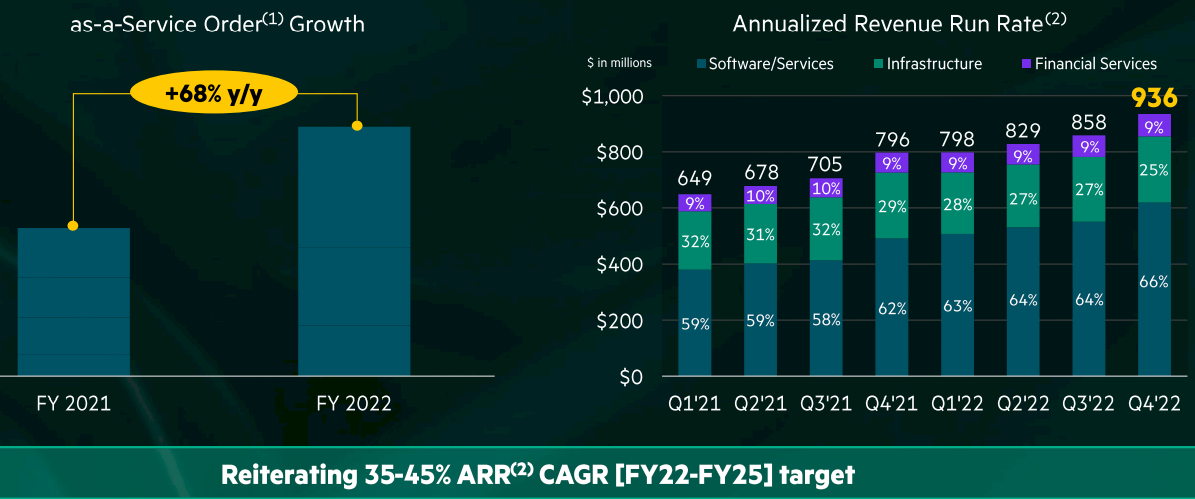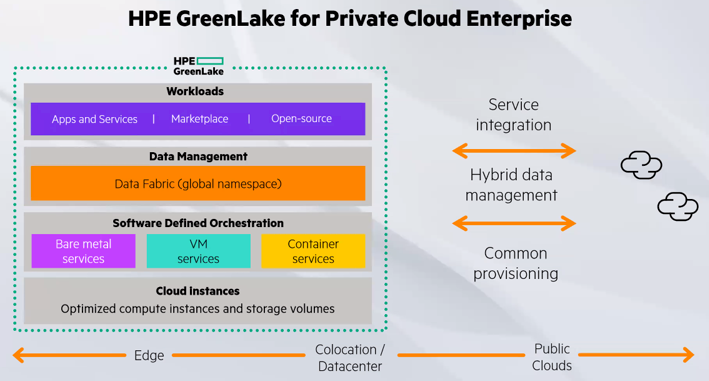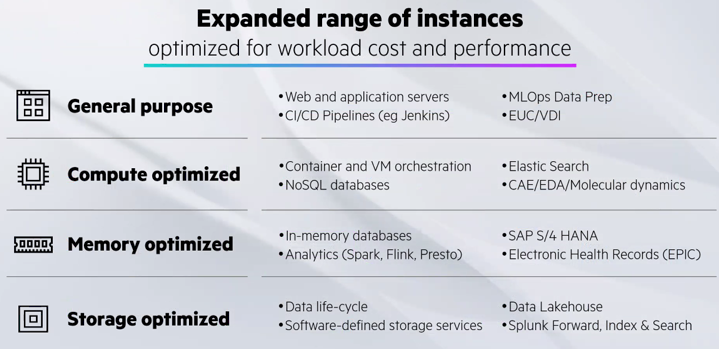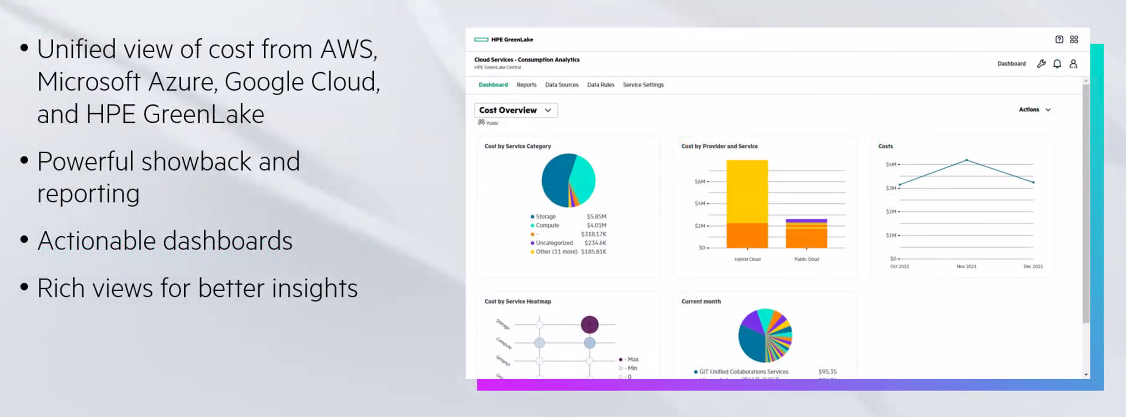
Three years ago, Hewlett Packard Enterprise was the first major hardware and software infrastructure vendor to announce plans to make its entire portfolio available as a service, setting 2022 as the deadline for making that happen.
Antonio Neri, chief executive officer at HPE, and other executives saw the move, which is based on the company’s GreenLake utility platform, as a way to extend the reach of its systems and software into the booming hybrid cloud space dominated by hyperscalers like Amazon Web Services, Microsoft, and Google, with a strong focus on the private cloud part of the equation in the datacenter, at colocation facilities, and at the edge.
Since then, HPE has aggressively grown the services it offers through GreenLake, building out the compute, storage, and connectivity capabilities, adding HPC, AI, machine learning, analytics and other fast-emerging technologies to the lineup, and supporting offerings from partners like SAP. This has helped HPE not only make GreenLake more attractive to a wider range of organizations but also keep in front of others like Dell Technologies, Lenovo, and Cisco Systems, all of which also are embracing the as-a-service model for their products.
There also are reports that HPE is looking to scoop up cloud services and software company Nutanix to bolster GreenLake, though neither company has even confirmed there are negotiations ongoing.
As we wrote about this summer, GreenLake is at the center of HPE’s future plans and revenue hopes, and growth of the as-a-service business in both orders and revenue has been steady if not spectacular. As seen in the chart below, for HPE’s fiscal year 2022, orders grew 68 percent year over year, with the fourth-quarter annualized revenue run rate hitting $936 million, up from $858 million the quarter before. That helped drive overall quarterly revenue up 7 percent, to $7.9 billion, and annual revenue up 3 percent, to $28.5 billion.
GreenLake has 65,000 customers, a 96 percent customer retention rate, and more than an exabyte of data under management.
It’s an indication that as enterprises become more cloud-savvy, they’re understanding that the best strategy is hybrid cloud, with a mix of public and private clouds, according to Vishal Lall, senior vice president and general manager of HPE’s GreenLake Cloud Services Solutions group.
“If you go five or six years back and you would have spoken to enterprises, they would have said, ‘Im going down the path of cloud and cloud means the public cloud,’” Lall told journalists during a briefing in the run up to this week’s HPE Discover show in Frankfurt, Germany. “But now, if you have the same conversation with customers now, they’re basically saying, ‘I’m going down the path of cloud, but cloud means a little bit different for me and I’m thinking about putting the right workloads in the right environment and that’s a mix of private and public clouds.’”
Lall noted that half of data is being created outside of the traditional datacenter or cloud – which means in large part the edge as the number of Internet of Things devices and systems rises sharply – and that is driving the evolution of organizations’ cloud strategies as they juggle such issues as data gravity and latency, costs, and control.
“Where the data is being produced is driving the way companies are thinking about their digital transformations,” he said. “One of the things they’re learning is that the approach they had for the public cloud at first essentially is not working very well, especially now more and more of the data is being produced at the edge.”
At the two-day Discover event in Germany, HPE is putting an emphasis on the private side of hybrid clouds. In June, the company rolled out GreenLake for Private Cloud Enterprise, an automated and scale private cloud offering for organizations that want to run both traditional and cloud-native applications that includes virtual machines, container, and bare metal workloads and comes with GreenLake’s pay-per-use consumption model.
This week, HPE is building out Private Cloud Enterprise by adding AWS ESK service to its list of container offerings – which includes HPE’s own software in its Ezmeral software portfolio – to give developers more deployment options for their Kubernetes and infrastructure-as-code work. HPE also is running out a range of infrastructure instances optimized for compute, memory, and storage workloads along with another instance for general-purpose computing.
“The idea of a single or homogenous one-size-fits-all works for some generic types of workloads, but in practice, more of our customers want to run more optimized workloads but they need it in that private cloud experience for performance, geo-locality of the data, security, any number of reasons,” said Bryan Thompson, vice president of product management for GreenLake Cloud Services Solutions. “By presenting these different optimized instances, we help customers configure and enable that cloud experience to optimize for their workloads, achieving the density for that generalized compute or AI types of instances for workloads all the way through things that might be optimized for HPC types of workloads, focusing on east-west networking or high-performance storage access.”
In addition, HPE’s Data Fabric hybrid data management plane will run natively on GreenLake for Private Cloud Enterprise, creating a single namespace spanning the public and private clouds to make it easier for organizations to access data regardless of where it sits.
For GreenLake, the vendor also is expanding the partner offerings to include GreenLake for Red Hat OpenShift Container Platform and GreenLake for VMware, which was announced last month. HPE is bringing a unified view to analytics enabling organizations to use and cost numbers for GreenLake as wells as AWS, Microsoft Azure, and Google Cloud Platform and offering GreenLake for Data Fabric and Ezmeral Unified Analytics through a new Ezmeral early access program.
It’s all part of HPE’s push to remake the long-time datacenter hardware supplier into a company that provides enterprises with the cloud-first offerings and services that are needed in a big data and hybrid cloud world.
“The thing about this private cloud is it’s delivered as a service, so it’s different from what you might have expected from an HPE or traditional hardware,” Thompson said. “It’s not about a bill of materials. It’s a service provided to the customer with a rate card-consumption experience. What services am I consuming? How long do I consume them? What’s my cost per hour? It gives that public cloud consumption experience now delivered in the form factor optimized … where they needed to be, in their datacenters, in their edge locations, in colocation.”
It also grows the customer base beyond the IT administrator to include application owners and developers through open standards that deliver API and CLI interfaces as well as cloud-native services, he said.









Be the first to comment